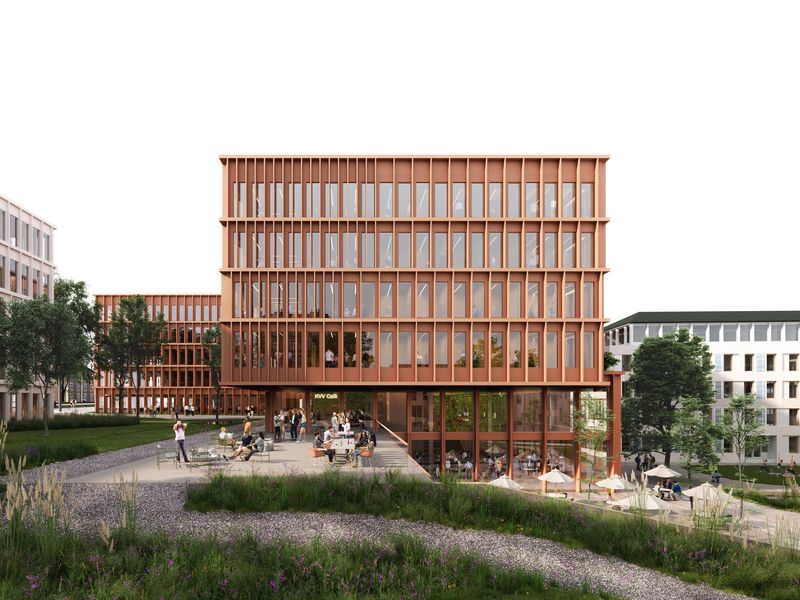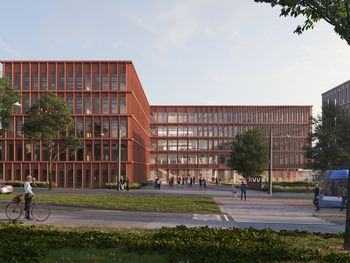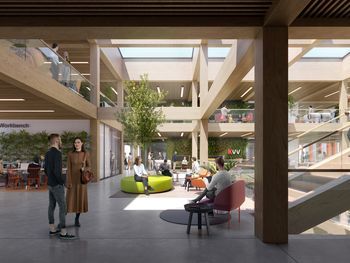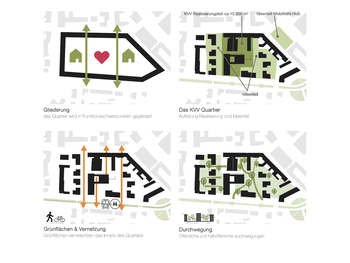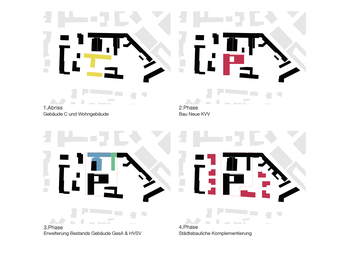The area of the municipal transport and supply company Kasseler Verkehrs- und Versorgungs-GmbH (KVV), under whose umbrella the KVG, the Städtische Werke and Netcom are located, will be redesigned in the next few years. The HPP design was developed within the framework of a competition and is characterised by two aspects in particular: the location of the new KVV building as a new defining urban element on Wilhelmshöher Allee - the public health department and HVSV will have their own addresses at Königstor - and the sensitive treatment of the existing urban development of the area. The concept also allows for a phased implementation of deconstruction, new construction, addition of new storeys and conversion of the existing buildings, so that the ongoing operations of the KVV are not impaired. The overall result is a well connected quarter with public circulation, characterised by a high proportion of green spaces and attractive communal areas.
The buildings are deliberately kept simple in their volumes to promote sustainable and simple construction and to allow flexible floor plan design in the compact, functional cubature. The L-shaped new KVV building forms an inviting forecourt and addresses the building to Wilhelmshöher Allee, which is thereby upgraded in terms of urban development. The 'market sphere' inside serves as a central, connecting element of the modern working environment and offers visitors and employees a forum for meeting and spending time. Connected to this, the light-flooded 'creative sphere' develops vertically into the atrium.
An important component of the concept is the targeted CO2 neutrality after 20 years of operation, which is to be achieved through the preservation of the existing building stock, an optimised energy concept and the design of the new buildings as timber hybrid buildings.

